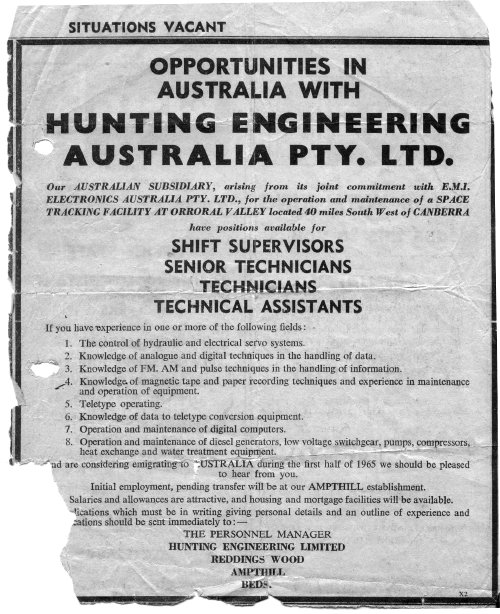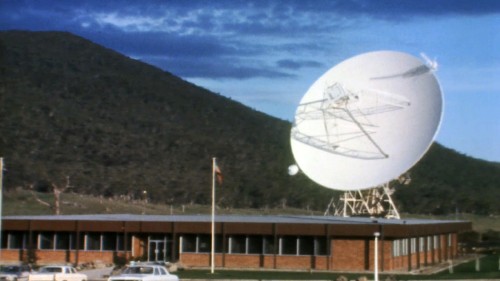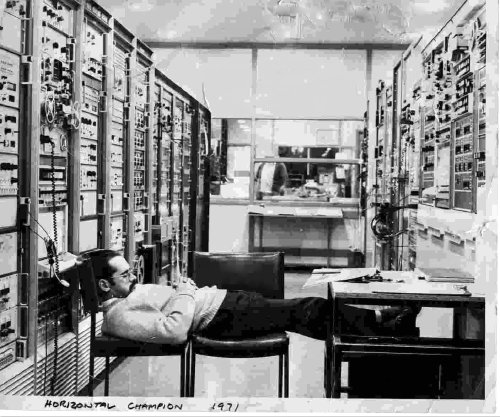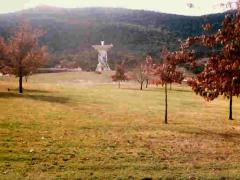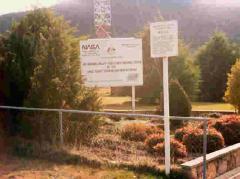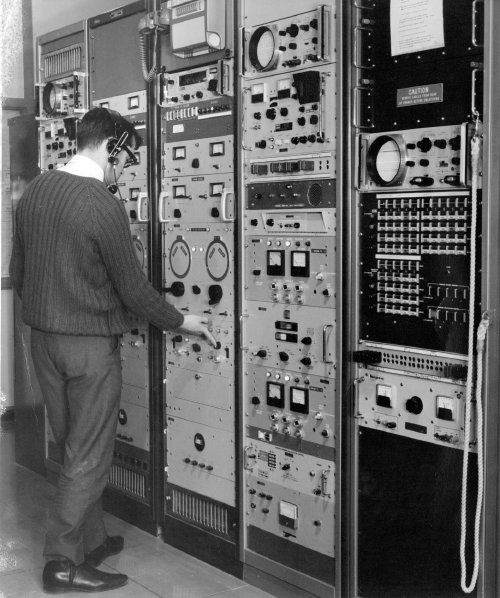The job advertisment. Scan by Gordon Owttrim.
Orroral Valley Tracking Station, ACT
from the UK to Orroral Valley – by Gordon Owttrim
I decided that the only way to persuade my boss, Reg, to give me more money was to get myself a new job and then let him decide if I was worth keeping with the incentive of an increase in wages. I scanned the local papers for jobs that were in my field.
There were quite a few that caught my eye over this period and I applied for some of them.
While I was looking there was a job advert for ex-military people who had radar and / or radio experience for a NASA Tracking station that was going to be built near Canberra, Australia. The company, Hunting Engineering was required to supply some of the staff. They shared the contract with EMI on a 20/80% mix. I applied as my wife, Liz, had a brother and sister who had migrated to Australia in the 50s and, although it was a big step, it seemed worth checking out.
The job advertisment. Scan by Gordon Owttrim. |
The Hunting interview was quite interesting, it was held at their factory at Amphill, Bedford, which was located across county from Stevenage. I was asked what I knew about antennas and I explained not too much as my recent experience was with tape recorders, the interviewer said tape recorders was not his field so the interview more or less concluded apart from information about the location and accommodation that was available. I left the interview feeling quite positive and Liz and I had a long discussion about emigrating. I did not hear anything so I assumed that I had been unsuccessful. I had forgotten all about Australia, then out of the blue I received a letter that was to change our lives for ever.
It was April 1965 and Liz was in Hitchen Hospital awaiting the birth of our third child. The mail arrived as usual and in it was an offer of a job in Australia from Hunting, it required me to get out there in about a month. I went to the hospital as usual, where Liz presented me with a baby girl, Susan. She was not too impressed at the thought of me heading of to Australia in a few weeks time. I rang the company to explain the circumstances and the final date ended up as 17th Aug. 1965. That was the date when we would all fly to Australia as a family.
We landed at Sydney at 6.00 am on Thursday 19th August 1965 (EST) having left London at 4.00 PM on Tuesday 16th August 1965 (GMT) travelling for about 36 hours without much sleep. We were directed through Customs, they did not seem very interested in us. The inspector seemed more interested in Nigel’s Matchbox cars than in us smuggling anything. The customs building was a tin shed and at that time in the morning it was quite chilly. Liz and I had an argument about whether to bring the children’s anoraks and I was glad that she had won, because the children would have been cold without them.
The whole Australian contingent of the O’Brien clan was at the Airport to meet us and it was a nice welcome. We stayed at Cronulla until the weekend, then Pat and Nick drove us up to Canberra. It was a long drive, in 1965 the road was mostly two lane, so the journey took about 5 hours. We booked into ‘Danmore Lodge’ in the suburb of Kingston where we were supposed to have arrived on the Thursday.
The Monday came, and we were all taken by the housing officer to look at the more permanent housing. When plans were made for Tracking Station, EMI, the main contractor for the staff, had persuaded Wimpy to build houses for the incoming staff. They build an estate in the Canberra suburb of Curtin and in Queanbeyan just across the border in NSW. This was the Glenrock Estate on the then outskirts of Queanbeyan. We saw the Curtin houses but did not even get out of the car to look because the same houses were £1000.00 cheaper in Queanbeyan. We looked at a house at 10 Gillman Place, Queanbeyan, deciding that this was the one for us. We were introduced to Alex Evans, who was the Real Estate agent for the house. We rented a furnished flat that was to be our home until, if and when, we were able move into the Gillman Place house. We moved into flat 4 at 165 Cooma Road on the Tuesday.
On the Wednesday morning an employee, came to pick me up for my first day at the Orroral tracking station. This was an interesting journey, we picked up another chap and headed out of Queanbeyan towards Cooma. We drove down the Monaro Highway for quite a way, then turned off on what I thought was a dirt track. I thought that we were taking a short cut, but nearly all of the rest of the journey was on dirt roads. We had been told in UK that the road to the tracking station was sealed, but my idea of a sealed road was sealed with Bitumen, but their idea of sealed meant ‘all weather’.
We crossed the Murrumbidgee River via the wooden bridge at Tharwa and drove on to Naas, Fitz Hill and the turnoff to Orroral via causeways across Rocky Crossing and Orroral Rivers. The Tracking Station was at the end of the valley. Orroral valley was surrounded by hills on all sides, it had been picked because this gave protection against man made interference.
I was introduced to the Chief Engineer, the Admin. Officer and then the Pay lady, she was in her forties and her breath smelt of gin or some sort of alcohol. She asked me if I was short of money as pay day was not until the next week. I said that I was a little short so she reached into a cardboard box under her desk and brought out a wad of notes and peeled off £40, she said that should tide me over until pay day. This lady did the pay for all the staff at Orroral, including shift workers, until the end of the contract in September 1967, without any mistakes in all that time. Her contract was not renewed and she was replaced by a pay office of three people, who hardly got the pay correct for the first year.
We were all on day work at first as we were in training, and it was decided that I would be assigned to A shift as a dish driver of the 85' (26m) dish.
There were all the installation team from NASA on site – the American who was the Dish expert trained me on the driving, operating and set up of the big dish.
We were not tracking spacecraft, apart from testing, as yet my duties included helping the hydraulic technician and the American dish expert with any last minute problems they had. The cables that fed the signals to the dish were all pressurized with Nitrogen to keep them dry and uncontaminated, but some were leaking after installing. This involved me in helping find these leaks, the method used was to apply soapy water to all the joints.
I was all right until we had to go to the Feed box which was on the tripods at the focus of the dish. The Dish was brought down to its lower position and using our only Cherry Picker we went up to the Feedbox. The Feedbox had a square door on it to provide access for maintenance. There was room for two people to work together inside it. The cables that fed the Dipoles were all pressurized so each one had to be checked for leaks with soapy water.
The Orroral 85' dish and Ops building, probably mid-1966. |
I was OK working inside the feedbox but the American then went outside to check the cables on the outside and going into the box. I was expected to also climb out on to the top of the feedbox, I must say that I was reluctant to climb out from the relative safety of the inside, particularly as the Cherry Picker had been taken away leaving a drop to the ground below me, but with the American’s help I was able to climb out and lay on the outside to complete the leak and repair checks.
The Installation Team finally gave us the OK for Operations and we all started shift work with officially going Operational in September 1965.
– Gordon Owttrim.
Gordon was quite at home at Orroral by 1971. |
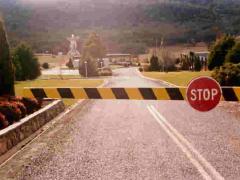 |
|
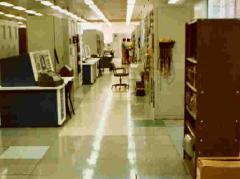 |
|
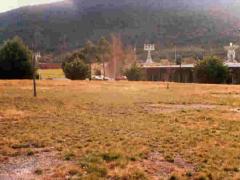 |
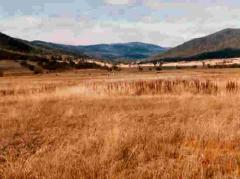 |
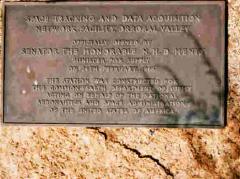 |
With thanks to Gordon Owttrim for these views of Orroral Valley. |
Gordon Owttrim on shift at Orroral Valley. Photo: Jim Thompson. Scan: Clive Broomfield. From Jim’s photos. |
